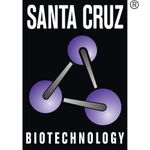Santa Cruz Biotechnology is a world leader in the development of products for the biomedical research market. Over the past 30+ years, the Company has focused on the ongoing development of research antibodies, siRNA and CRISPR Gene editing tools, biochemicals, labware and more recently has expanded into animal health care products. Santa Cruz Biotechnology has the highest commitment to quality and customer service.

H-Ras (259) | Santa Cruz Biotechnology
rat monoclonal IgG1; H-Ras Antibody (259) is an IgG1 rat monoclonal H-Ras antibody (also designated HRAS antibody) that detects the H-Ras protein of mouse, rat and human origin by WB, IP, IF, FCM and ELISA. H-Ras Antibody (259) is available as both the non-conjugated anti-H-Ras antibody form, as well as multiple conjugated forms of anti-H-Ras antibody, including agarose, HRP, PE, FITC and multiple Alexa Fluor® conjugates. The mammalian Ras (also designated v-Ha-Ras, Harvey rat sarcoma viral oncogene homolog, HRAS1, K-Ras, N-Ras, RASH1 or c-bas/has) gene family consists of the Harvey and Kirsten Ras genes (c-H-Ras1 and c-K-Ras2), an inactive pseudogene of each (c-H-Ras2 and c-K-Ras1) and the N-Ras gene. The three Ras oncogenes, H-Ras, K-Ras and N-Ras, encode proteins with GTP/GDP binding and GTPase activity. Ras proteins alternate between an inactive form bound to GDP and an active form bound to GTP, activated by a guanine nucleotide-exchange factor (GEF) and inactivated by a GTPase-activating protein (GAP). Ras nomenclature originates from the characterization of human DNA sequences homologous to cloned DNA fragments containing oncogenic sequences of a type C mammalian retrovirus, the Harvey strain of murine sarcoma virus (HaMSV), derived from the rat. Under normal conditions, Ras family members influence cell growth and differentiation events in a subcellular membrane compartmentalization-based signaling system. Oncogenic Ras can deregulate processes that control both cell proliferation and apoptosis. The Ras superfamily of GTP hydrolysis-coupled signal transduction relay proteins can be subclassified into Ras, Rho, Rab and ARF families.




























































